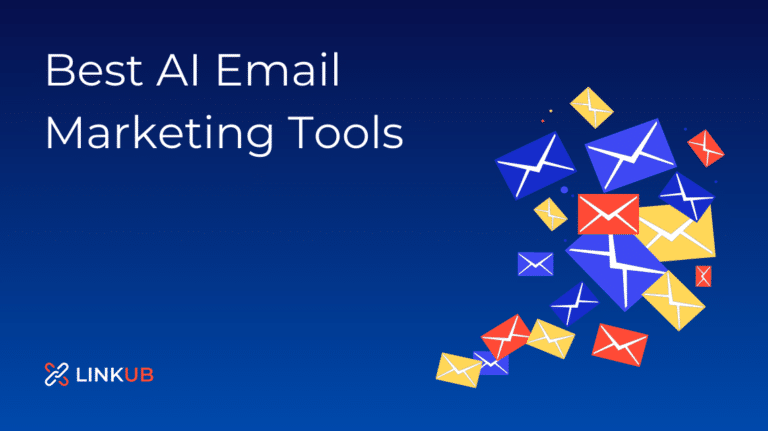91 Best Email Deliverability Tools in 2024
Ever been frustrated with low email deliverability rates, causing your well-crafted messages to land in spam folders or bounce back undelivered?
A recent study found that only 85% of marketing emails reach their intended recipients.
That’s why we’ve put together a listicle of the best email deliverability tools that’ll help you improve your inbox placement and maximize the effectiveness of your email campaigns. Ready to boost your email success? Let’s dive in!
Top Email Deliverability Software
Do you have an email deliverability tool?
Methodology
The ranking of the email deliverability tools is determined by considering several factors, including the number of citations and user reviews they have received.
Most Used Email Deliverability Software
1.
Mailgun is a robust email delivery service designed to improve the deliverability of your emails. Key benefits include:
- Powerful APIs: Easy integration with your applications for sending, receiving, and tracking emails.
- Email validation: Reduces bounce rates by verifying email addresses before sending messages.
- SMTP relay: Offers a secure and reliable Simple Mail Transfer Protocol (SMTP) relay for email delivery.
- Advanced analytics: Provides real-time insights into email performance, such as open rates, bounces, and click-through rates.
- High deliverability: Improves inbox placement with expert handling of email authentication, reputation management, and more.
Pricing: Free/Paid
Pricing page: https://www.mailgun.com/pricing/

2.
Pepipost is a cost-effective email delivery service that enhances email deliverability and engagement. Key benefits include:
- Easy integration: Offers SMTP and API options for seamless integration with your applications.
- Real-time reporting: Tracks email performance with detailed analytics, including opens, clicks, and bounces.
- High inbox placement: Prioritizes email deliverability with advanced reputation management and authentication.
- Scalable infrastructure: Accommodates small businesses and enterprises with a reliable and secure system.
- Affordable pricing: Provides competitive rates without compromising email delivery quality.
Pricing: Paid

Twilio SendGrid is a powerful email delivery platform that streamlines email marketing and transactional emails. Key benefits include:
- Comprehensive APIs: Integrates seamlessly with your apps, offering customizable SMTP and RESTful APIs.
- High deliverability: Enhances inbox placement through expert reputation management, email authentication, and dedicated IPs.
- Scalable infrastructure: Supports businesses of all sizes with a robust and secure email delivery system.
- Real-time analytics: Offers insightful email performance data, such as open rates, clicks, and bounces.
- Template engine: Simplifies email creation with dynamic templates and easy-to-use editing tools.
Pricing: Free/Paid
Pricing page: https://sendgrid.com/pricing/

4.
Folderly is an AI-powered email deliverability tool focused on resolving spam issues and improving inbox placement. Key benefits include:
Spam test: Identifies deliverability issues by conducting comprehensive tests across multiple email clients.
Domain health check: Analyzes domain reputation, authentication, and configuration to prevent email delivery issues.
Actionable insights: Provides clear suggestions to fix spam-related problems and improve email deliverability.
Email monitoring: Tracks email performance in real-time, ensuring continuous deliverability optimization.
User-friendly dashboard: Presents all essential data easily and digestibly for quick analysis.
Pricing: Paid
Pricing page: https://folderly.com/pricing

5.
MxToolbox is a versatile email deliverability and network diagnostics tool that helps maintain email infrastructure health. Key benefits include:
Comprehensive diagnostics: Offers a suite of tools for DNS, email, and network diagnostics to troubleshoot issues.
Blacklist monitoring: Checks your domain/IP against popular blacklists, protecting your email reputation and deliverability.
MailFlow monitoring: Tracks email delivery performance and detects potential issues affecting deliverability.
DMARC setup & analysis: Simplifies DMARC setup and provides actionable insights to enhance email authentication and security.
User-friendly interface: Allows easy access to essential information for quick analysis and issue resolution.
Pricing: Free/ Paid

6.
GlockApps is a comprehensive email deliverability tool that helps improve inbox placement and email performance. Key benefits include:
- Spam testing: Conducts thorough spam tests across major email clients to identify deliverability issues.
- IP & domain monitoring: Tracks domain and IP reputation to ensure high deliverability and avoiding blacklisting.
- DMARC analytics: Simplifies DMARC setup and provides insightful reports to strengthen email authentication.
- Bounce tracking: Monitors email bounces to maintain a clean mailing list and reduce the risk of blocking.
- Real-time alerts: Sends notifications on deliverability issues, enabling quick resolution and proactive monitoring.
Pricing: Free/Paid
Pricing page: https://glockapps.com/pricing/

Further reading
What Is Email Deliverability?
Email deliverability refers to the ability to deliver emails to your recipients’ inboxes.
It is hard to determine your email deliverability. Many factors influence this, including the service provider, sender’s domain, email list quality, email frequency, IP reputation, and overall sender reputation profile.
Do You Need an Email Deliverability Tool?
Yes.
Anyone who sends emails for marketing or sales purposes should keep track of their email deliverability.
Reliable email deliverability, or landing in the main inbox most often, gives your email campaigns the highest chance of success.
Even if you’re sending high-quality emails and experiencing high levels of engagement, you’re not fully protected over time.
What Are SPF and DKIM?
The terms SPF and DKIM are frequently used when discussing email deliverability.
SPF is an acronym that stands for Sender Policy Framework. An email authentication protocol enables the domain owner to specify which mail servers are used to send emails. When sending an email, email providers will do an SPF check to validate the SPF record. They check the SPF record to determine if the IP address used to send the email is mentioned. If it is, everything is OK; if not, the emails will fail SPF authentication, and the email will be prohibited.
DKIM is an abbreviation for Domain Keys Identified Mail. The protocol lets a company accept responsibility for sending a message that email providers can verify. DKIM makes use of cryptographic authentication.
What Is IP Warming?
IP warming is the progressive increase in the volume of messages sent using a single IP address by a sender. It is required to build a reputation with internet service providers.
Dedicated solutions are available to progressively grow your email volume to establish a solid email sender’s reputation.
Wrap Up
So there you have it – our top picks for the best email deliverability tools on the market!
From Postmark and Mail-tester to other standout options we’ve covered, these tools are designed to help you ensure your emails reach their intended targets and avoid the dreaded spam folder.
As you choose the right tool for your needs, consider factors like accuracy, ease of use, and integration with your existing email platform.
Here’s to successful email campaigns, higher deliverability rates, and connecting with your audience like never before.
Happy emailing, and may your messages always find their way to the right inboxes!
FAQs
Email deliverability tools are software solutions designed to optimize the delivery of your email campaigns, ensuring that your messages reach the intended recipients’ inboxes while avoiding spam filters, bounces, and other potential delivery issues.
Email deliverability is crucial for the success of your email marketing campaigns, as it directly impacts the reach and visibility of your messages. Poor deliverability can lead to lower open rates, reduced click-through rates, and decreased engagement, ultimately affecting your email marketing efforts’ return on investment (ROI).
Email deliverability tools employ various techniques and features to improve your email campaigns’ deliverability, such as:
• Analyzing and monitoring your sender’s reputation
• Authenticating your emails using SPF, DKIM, and DMARC
• Checking your email content and subject lines for spam triggers
• Providing actionable recommendations to optimize your campaigns
• Monitoring bounce rates, blacklists, and other factors affecting deliverability
Some benefits of using email deliverability tools include the following:
• Improved inbox placement and open rates
• Reduced bounce rates and spam complaints
• Enhanced sender reputation and credibility
• Increased engagement and conversions
• Better insights into your email marketing performance
When evaluating email deliverability tools, consider the following features:
• Email authentication and verification
• Inbox placement and spam filter testing
• Content analysis and optimization
• Sender reputation monitoring and management
• Comprehensive reporting and analytics
• Integration with popular email service providers (ESPs)
• Ease of use and setup
To choose the best email deliverability tool, consider the following factors:
• Define your email deliverability goals and requirements
• Assess ease of use and learning curve
• Evaluate features and functionality
• Consider integration with your existing email service provider
• Compare pricing and available plans
• Read user reviews and testimonials
• Take advantage of free trials or demos
While email deliverability tools can significantly improve your email campaigns’ deliverability, they cannot guarantee that all your emails will land in the recipients’ inboxes. Deliverability depends on various factors, such as sender reputation, content, and recipient engagement. Email deliverability tools can help you optimize these factors but cannot provide a 100% guarantee.
The cost of email deliverability tools varies depending on the provider, features, and pricing model. Some solutions offer tiered subscription plans based on factors such as the number of emails, users, or features included. Others may offer pay-as-you-go or custom pricing options. It’s essential to compare different tools and their pricing structures to find the best fit for your needs.
Most email deliverability tools can integrate with popular email service providers (ESPs), making it easy to optimize and monitor your email campaigns within your existing email marketing platform. However, checking for compatibility and integration options is crucial before selecting an email deliverability tool.
To improve your email deliverability without using a dedicated tool, you can:
• Authenticate your emails using SPF, DKIM, and DMARC to establish credibility
• Build and maintain a high-quality email list by using double opt-in and removing inactive subscribers
• Segment your audience and send targeted, relevant content to increase engagement
• Avoid spam triggers in your content and subject lines by using non-deceptive language and adhering to best practices




![Content Marketing: Tactics and Trends [2024]](https://linkub.io/wp-content/uploads/2022/06/Guest-post-smart-tactics-and-current-trends-content-marketing-2022-768x432.png)

